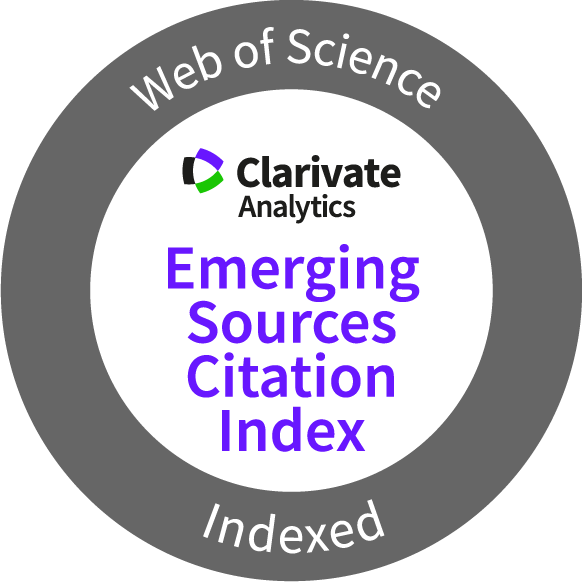Chemistry Journal of Moldova
2014 Volume 9, no.2
COVER
EDITORIAL BOARD
ISSUE CONTENTS LIST WITH GRAPHICAL ABSTRACTS
NEWS AND EVENTS
INSTRUCTIONS FOR AUTHORS
EDITORIAL BOARD
ISSUE CONTENTS LIST WITH GRAPHICAL ABSTRACTS
NEWS AND EVENTS
INSTRUCTIONS FOR AUTHORS
Author(s):
Field: Analytical chemistry
Type: Research paper
Issue: 2014 Volume 9, no.2
Pages: 8-13
Maria Sandu, Tudor Lupascu, Anatol Tarita, Tatiana Goreacioc, Sergiu Turcan, Elena Mosanu
Field: Analytical chemistry
Type: Research paper
Issue: 2014 Volume 9, no.2
Pages: 8-13
Full Text (PDF): Download
DOI: dx.doi.org/10.19261/cjm.2014.09(2).01
Graphical Abstract: The study relates to determination of nitrate in presence of nitrite in water and can be used in the quality monitoring of natural water (surface and groundwater), drinking water, water from fish farms and public aquaria where autonomous filters is used. The nature and quantity of reagents used have insignificant impact on natural waters and sewages. According to the investigation, the method includes the removal of nitrite from the solution/water with sulfaminic acid, the nitrate ion reduction to nitrite using a reducing mixture that contains Na2SO4 and zinc dust in ratio of 100:5 and determining the nitrite with the Griess reagent.

Downloads: 196
Author(s):
Field: Analytical chemistry
Type: Research paper
Issue: 2014 Volume 9, no.2
Pages: 14-18
Raluca Anamaria Cristache, Ana Maria Budu, Petronela Spiridon, Viorica Vasilache, Ion Sandu
Field: Analytical chemistry
Type: Research paper
Issue: 2014 Volume 9, no.2
Pages: 14-18
Full Text (PDF): Download
DOI: dx.doi.org/10.19261/cjm.2014.09(2).02
Graphical Abstract: The authentication of cultural heritage assets is a complex process of scientific investigation which regards obtaining information about: author (painter), the period when it was made, the owners and other data related to the main contexts of their evolution in time (routes travelled). This work presents a comparative study of the paper used in the preparation layer of three icons painted in Russian style. As an analysis techniques were used the micro and macro photography assisted by Optical Microscopy (OM), SEM-EDX and micro-FTIR.

Downloads: 36
Author(s):
Field: Ecological chemistry
Type: Research paper
Issue: 2014 Volume 9, no.2
Pages: 19-25
Oxana Spinu
Field: Ecological chemistry
Type: Research paper
Issue: 2014 Volume 9, no.2
Pages: 19-25
Full Text (PDF): Download
DOI: dx.doi.org/10.19261/cjm.2014.09(2).03
Graphical Abstract: On the basis of currently revised thermodynamic data for Cr(III) and Cr(VI) hydrolysis and photolytic equilibria in addition to original thermodynamic and graphical approach, used in this paper, the repartition of their soluble and insoluble chemical species has been investigated. By means of the diagrams “ΔG – pH”, the areas of thermodynamic stability of chromium(III) hydroxide have been established for a number of the analytical concentration of Cr(III) in heterogeneous mixtures. The obtained calculated results correlate well with existing experimental data.
Downloads: 50
Author(s):
Field: Ecological chemistry
Type: Research paper
Issue: 2014 Volume 9, no.2
Pages: 26-31
Silvea Pruteanu, Petronela Spiridon, Viorica Vasilache, Ion Sandu
Field: Ecological chemistry
Type: Research paper
Issue: 2014 Volume 9, no.2
Pages: 26-31
Full Text (PDF): Download
DOI: dx.doi.org/10.19261/cjm.2014.09(2).04
Graphical Abstract: Old icons, especially those involved in liturgical rituals are affected in time by external agents factors (temperature, humidity, light, pollution, microbiological attack, abrasion etc.), resulting changes of the appearance. Based on the literature in the field, a series of alcoholic solutions of different concentrations were made, as such or basified, which were compared with ecologic synergic systems based on organic uncolored vegetable juices and decoctions from dried plants. The cleaning effectiveness was done by visual analysis and CIE L * a * b * reflection colorimetry, this technique permitting to determine by color deviations the critical point where the patina and polychromy.
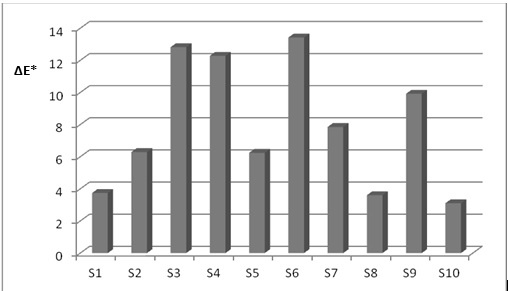
Downloads: 41
Author(s):
Field: Ecological chemistry
Type: Research paper
Issue: 2014 Volume 9, no.2
Pages: 32-40
Alexandr Kоshev, Оlga Covaliova, Valery Varentsov
Field: Ecological chemistry
Type: Research paper
Issue: 2014 Volume 9, no.2
Pages: 32-40
Full Text (PDF): Download
DOI: dx.doi.org/10.19261/cjm.2014.09(2).05
Graphical Abstract: The mathematical model of electrochemical processes distribution within the three-dimensional flow-through electrode for the system Fe(III)/Fe(II)/Fe is described in this paper, considering also the electrochemical reactions of hydrogen and molecular oxygen reduction. The results of calculations and experimental studies of iron electro-reduction are given, the analysis of the numerical modeling is provided.

Downloads: 37
Author(s):
Field: Ecological chemistry
Type: Research paper
Issue: 2014 Volume 9, no.2
Pages: 41-51
Оlga Covaliova, Alexandr Kоshev, Valery Varentsov
Field: Ecological chemistry
Type: Research paper
Issue: 2014 Volume 9, no.2
Pages: 41-51
Full Text (PDF): Download
DOI: dx.doi.org/10.19261/cjm.2014.09(2).06
Graphical Abstract: The main regularities of the electroactive components distribution, polarization and local current density within the depth of the three-dimensional flow-through electrode have been studied using the calculation method, in dependence on the overall current density, electrode thickness and degree of its compression, solution flow velocity through the electrode, initial concentration of Fe(III) ions in the solution and electrodes brand.
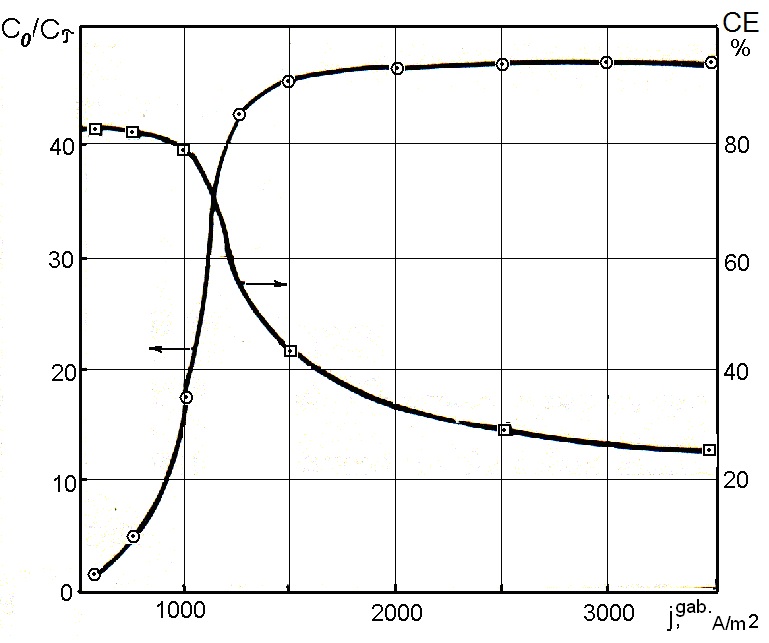
Downloads: 31
Author(s):
Field: Ecological chemistry
Type: Research paper
Issue: 2014 Volume 9, no.2
Pages: 52-57
Karen Ghazaryan, Hasmik Movsesyan, Naira Ghazaryan, Gor Gevorgyan, Karlen Grigoryan
Field: Ecological chemistry
Type: Research paper
Issue: 2014 Volume 9, no.2
Pages: 52-57
Full Text (PDF): Download
DOI: dx.doi.org/10.19261/cjm.2014.09(2).07
Graphical Abstract: Kajaran town is situated in the south-east of the Republic of Armenia in Syunik Marz. Developed mining and smelting industries can be observed in this area. Six the most risky sites in this area and an unpolluted site as a control were selected for the study. The content of metals was determined by means of ELAN 9000 ICP-MS System. Study results revealed the increase up to 17 times in contents of following metals: Co, Ni, Cu, Zn, Cr, Sr, Mo, Cd, Pb, As. Experiments have led us to the assumption that pollution of soils with heavy metals in the studied territory is conditioned by human activities, particularly by mining and smelting industry.
Downloads: 47
Author(s):
Field: Ecological chemistry
Type: Research paper
Issue: 2014 Volume 9, no.2
Pages: 58-61
Tudor Lupascu, Mihail Ciobanu, Victor Botan
Field: Ecological chemistry
Type: Research paper
Issue: 2014 Volume 9, no.2
Pages: 58-61
Full Text (PDF): Download
DOI: dx.doi.org/10.19261/cjm.2014.09(2).08
Graphical Abstract: Processes of removal of divalent ions of iron and manganese and hydrogen sulfide from groundwater at various pH values and temperature were studied. Obtained results have been used in order to elaborate a process of groundwater purification from the mentioned pollutants. The use of elaborated process for natural water leads to the decrease of the content of iron, manganese and hydrogen sulfide below the maximum allowable concentrations.
Downloads: 47
Author(s):
Field: Inorganic and coordination chemistry
Type: Research paper
Issue: 2014 Volume 9, no.2
Pages: 62-66
Masahiro Mikuriya, Melissa Schumacher, Chinatsu Kawano, Takahiro Akihara, Kenta Ono, Daisuke Yoshioka, Hiroshi Sakiyama, Makoto Handa
Field: Inorganic and coordination chemistry
Type: Research paper
Issue: 2014 Volume 9, no.2
Pages: 62-66
Full Text (PDF): Download
DOI: dx.doi.org/10.19261/cjm.2014.09(2).09
Graphical Abstract: Dinuclear nickel(II) pivalate with µ-aqua- and di-µ-pivalato-bridges having monodentate pivalato and monodentate pivalic acid molecules, [Ni2{O2CC(CH3)3}4(OH2){HO2CC(CH3)3}4], was prepared and characterized by elemental analysis and IR and UV-Vis spectroscopies, temperature dependence of magnetic susceptibilities (4.5—300K), and single-crystal X-ray crystallography. The magnetic data analysis showed a ferromagnetic interaction between the two nickel atoms.
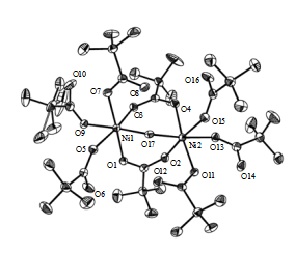
Downloads: 60
Author(s):
Field: Organic chemistry
Type: Research paper
Issue: 2014 Volume 9, no.2
Pages: 67-73
Ana Popusoi, Nicanor Barba, Aurelian Gulea, Jenny Roy, Donald Poirier
Field: Organic chemistry
Type: Research paper
Issue: 2014 Volume 9, no.2
Pages: 67-73
Full Text (PDF): Download
DOI: dx.doi.org/10.19261/cjm.2014.09(2).10
Graphical Abstract: 3-(4-(Dimethylamino)phenyl-1-(4-isothiocyanatophenyl)prop-2-en-1-one was obtained from the corresponding N,N-dimethylthyoureas by elimination of dimethylamine at heating with gaseous hydrogen chloride in chloroform and 1-(4-isothiocyanatophenyl)-3-(pyridin-2-il)prop-2-en-1-one by treating 1,1-dimethyl-3-(4-(3-(pyridin-2-il)-acryloyl)-phenyl)thyourea with acetic anhydride. For all obtained compounds in the course of reaction the antileukemia activity was investigated.
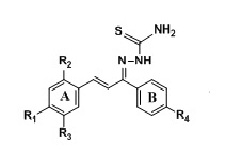
Downloads: 47


